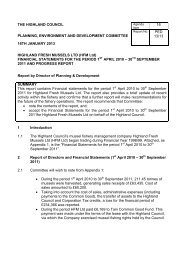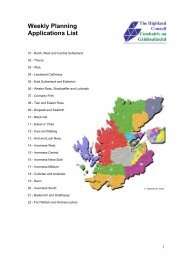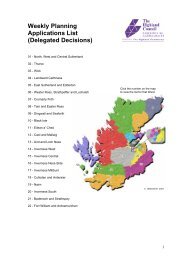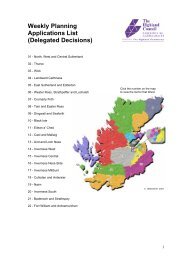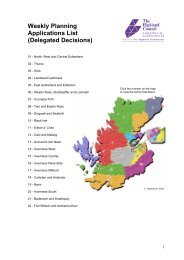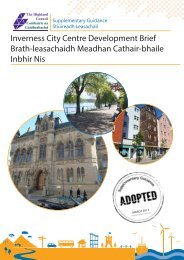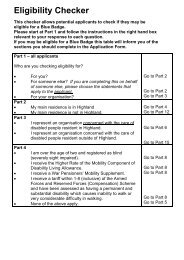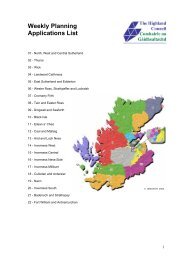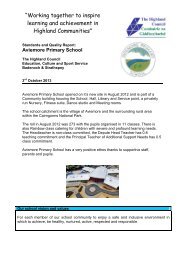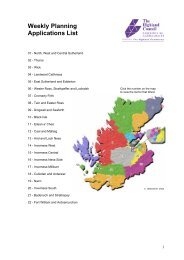A Single Strategy for Sensory Needs - The Highland Council
A Single Strategy for Sensory Needs - The Highland Council
A Single Strategy for Sensory Needs - The Highland Council
You also want an ePaper? Increase the reach of your titles
YUMPU automatically turns print PDFs into web optimized ePapers that Google loves.
t was felt that in terms of multi-agency working that there was a lack of clarity of roles and in some cases overlap of roles. <strong>The</strong> way<br />
<strong>for</strong>ward was seen in:<br />
<br />
<br />
<br />
<br />
A better understanding of the key worker and the care manager roles;<br />
<strong>The</strong> <strong>for</strong>ming and development of a functional vision assessment team, which had reviewing and monitoring roles;<br />
<strong>The</strong> prioritising of early intervention so that parents are supported as soon as they discover their baby is visually impaired;<br />
Partnership working between Education, Health and Visual Impairment Services <strong>Highland</strong> with shared assessments at all the<br />
child’s’ milestones. A shared acceptance of the importance of mobility <strong>for</strong> these children, accessing their curriculum, and<br />
developing their personal and social skills.<br />
In terms of the limited resources available to visually impaired services it was felt that:<br />
<br />
<br />
<br />
<br />
<strong>The</strong>re should be a rethinking of the way the voluntary sector, Social Work, Education and Health deliver services to these<br />
young people.<br />
To share, catalogue and pool resources already owned by Education, Health and Social Work.<br />
To have staffing levels appropriate to meet the needs of the population of visually impaired children <strong>for</strong> their education<br />
and <strong>for</strong> their independence.<br />
Financing to renew and replace resources.<br />
<strong>The</strong>re is much to accomplish. This attempt to address the issues surrounding the social exclusion of visually impaired children<br />
and young people was an excellent way of bringing together the different facets of the service both those who give provision<br />
and those who receive it. May the initiatives lead to the <strong>for</strong>mation of future strategies that move ever closer to a seamless<br />
service.<br />
Access<br />
Barriers to “Access” are in many ways “invisible” and “unheard” <strong>for</strong> people with sensory needs. Lack of understanding and<br />
awareness of needs are preventing progress towards equality and inclusion that otherwise remains largely aspirational.<br />
Despite a wealth of documents about equalities and access, user consultation and Best Practice Standards, legislation and<br />
Government Commissions, there remains a widespread impression that people, particularly at strategic levels, who can “hear”<br />
and “see”, fail to grasp what is required in the context of sensory services. Consequently services are often left to the small<br />
batch of “specialists” who may consequently contribute to services remaining out of “mainstream.”<br />
This lack of awareness (whether arrogance, ignorance or a combination of both) seems to be the fundamental reason (and<br />
there<strong>for</strong>e challenge) why sensory services have struggled to receive sufficient priority recognition.<br />
29



